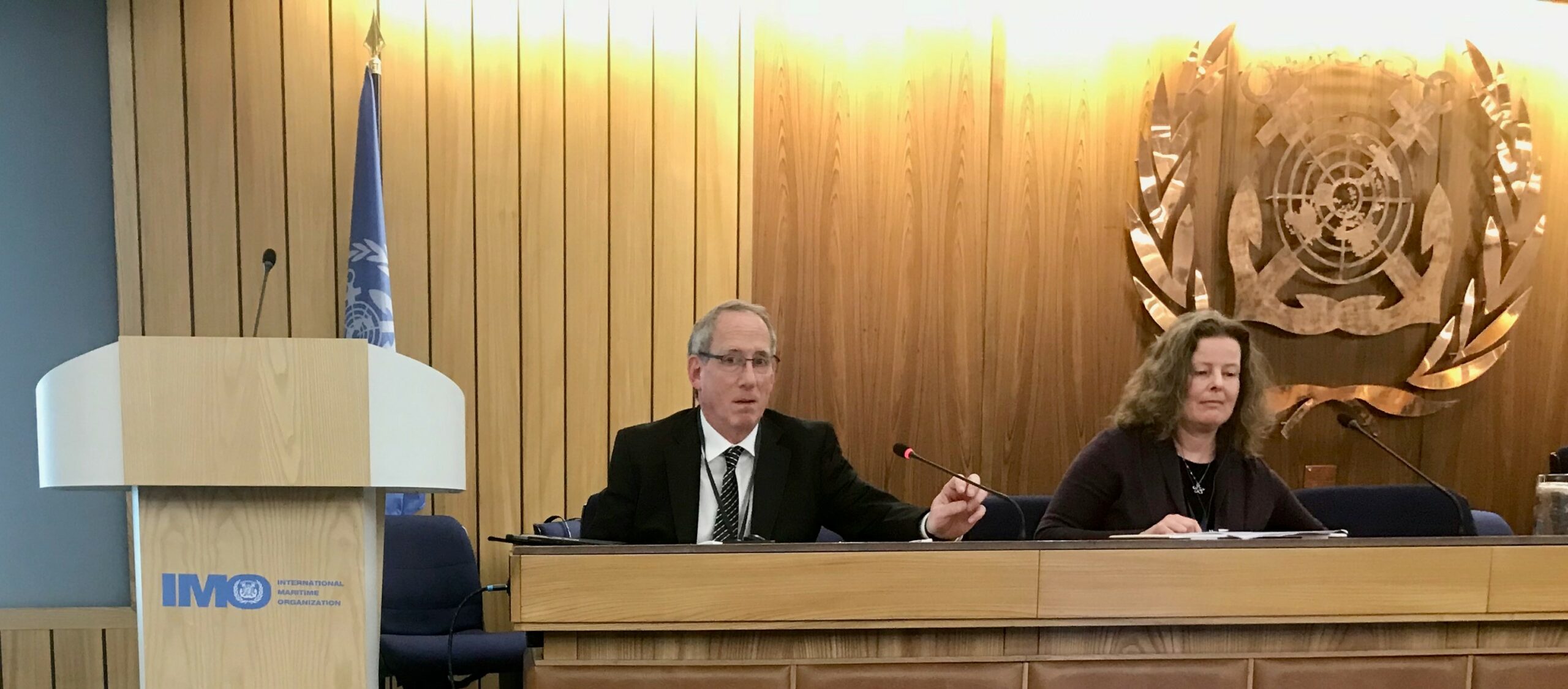IBIA demonstrates electronic BDN at IMO
IBIA showed delegates at the 10th session of the IMO’s Sub-Committee on Pollution Prevention and Response an example of how electronic bunker delivery notes (BDNs) can work in practice.
The subject was on the agenda at PPR 10 last week following a proposal, contained in document PPR 10/14, by the UK, IACS and IBIA, to ensure electronic BDNs are recognised by relevant authorities as an acceptable alternative to traditional paper hard copies.
IBIA had the opportunity to make a short lunch-time presentation with the title “BDNs: The future is paperless” – to highlight the benefits of using an electronic BDN. Longstanding IBIA member Jeff Mildner of Vortex Development Group joined the IBIA delegation to PPR 10 to provide a live demonstration of the digital BDN developed by his company.
“Bunker delivery notes, BNDs, are important documents both for compliance with Regulation 18 of MARPOL Annex VI and for commercial purposes,” IBIA’s Director and IMO Representative Unni Einemo told PPR 10. She also pointed out that paper copies filled in by hand can be hard, that a paper copy can be subject to falsification simply by using a pen, and it could be damaged or lost. Electronic BDNs, by comparison, would read clearly and be less at risk of damage, loss and falsification.
“Several companies are using electronic BDNs already,” Einemo told PPR 10, stressing that there would be some variations between different versions, but they would have common elements. “Today we will show one example,” she said, introducing Jeff Milder.
Mildner went through a step-by-step demonstration of how an electronic BDN would be created using the Vortex software, which is generally available on an App called “Digital Bunker”.
Key benefits of an electronic BDN highlighted during his live demonstration was that the system has built-in safeguards to ensure the BDN is correctly filled in and completed ensuring all the necessary information is included. Most importantly, as it is generated and then distributed in real-time, copies can go to all relevant stakeholders simultaneously, thus making it almost impossible for any one party to falsify the documentation. Other information that helps with verifying details of the delivery and the veracity of the BDN are also built in.
IBIA’s main objective in doing the presentation at PPR 10 was to address concerns about whether electronic BDNs can be manipulated and falsified. We believe electronic BDNs are more tamper-proof than paper copies, but some Member States needed convincing.
Other benefits of digitalising the BDN include improved efficiency and less resources used on paper copies and physical filing facilities. There is also great potential for adding more data about the delivery than the current minimum regulatory requirements, and for sharing the BDN and hence the data it contains on bunker quantity and fuel types with relevant authorities.
During the presentation, we received questions about potential future requirements for information to be included in the BDN, such as well to wake carbon factors for various fuel types for calculation of GHG emissions. Einemo suggested that this would make electronic solutions even more relevant that carrying multiple-page paper copies to cover a range of scenarios. Electronic BDNs can more readily be adapted to meet the relevant criteria and include further relevant information as attachments.
